2022/05/02 Articles
Marika: Sailing Through Stormy Waters and Conflicts of Interest!
For some months now, Marika has been devoting time and energy to growing her client base. Today, she is reaping the rewards of her efforts and meeting with Eva Zive, a famous painter and potential client, whom she met at a networking cocktail party.
Ms. Zive tells Marika that she wants to sue John Nowey who has failed to honour the contract for the purchase of one of the paintings she showcased at her exhibit in Sherbrooke.
Once they are seated in the conference room, Eva Zive recounts the circumstances of the sale of the painting. Her memory is a bit hazy and at times she evades certain questions. Marika concludes the interview by stating that a conflict of interest search must be completed before she can accept the mandate.
Marika knows the importance of a conflict of interest search. Me Léveillé, a lawyer and the firm’s resource person on conflicts of interest, has often explained that conflict of interest situations generally fall into two broad categories: situations in which two current or former clients have opposing interests, and situations in which the client and the lawyer have opposing interests. To avoid these problems, a conflict of interest checking system should be in place to identify conflicts of interest, whether the system is manual or computerized.
Upon receiving the results of the conflict of interest search, Marika learns that John Nowey is a long-time client of the firm. Marika then wonders whether there is a possible conflict of interest since she obtained information from Eva Zive, even though this information was incomplete. Indeed, the Code of Professional Conduct of Lawyers is explicit on this point: “A lawyer must avoid any situation of conflict of interest.”[1]
Marika contacts Me Léveillé to discuss this situation. Based on the information gathered, it appears that during the initial interview Eva Zive did not provide any confidential information that could give rise to a conflict of interest.
Me Léveillé takes the opportunity to give Marika a few pointers to help her navigate through conflicts of interest so as to avoid getting caught in stormy waters.
- It is crucial to establish a good conflict of interest checking system. To ensure its reliability, it must contain the appropriate information, the data entry procedures must be consistent, and it must be used and updated regularly.
- Designating a resource person to handle conflicts of interest within the firm can help clarify certain complicated issues and eliminate any doubt about a given situation. Situations of conflicts of interest must be assessed in light of all the firm’s clients.
- Client information should include:
° Names of all clients, past or present, as well as their spouses or related persons in the case of a legal person;
° File number;
° Date the file was opened;
° Nature of the mandate (legal work to be done);
° Names of opposing parties or all parties involved;
° Name of the lawyer in charge of the file, if applicable.
- The firm’s employee information should include:
° Names of all professionals and their spouses;
° Names of all employees and their spouses;
° Names of all partnerships or companies in which they have an interest.
- Information on declined mandates should include:
° Name of the person or organization your firm declined to represent;
° Names of all opposing or involved parties;
° Nature of the matter.
- In order for the conflict of interest checking system to be effective and reliable, it is preferable that data entry be done by one person. This ensures uniformity, which is essential. Of course, it is wise to have at least two people who are familiar with the system, even though only one person is in charge of it.
- The identification of potential conflicts of interest should be done at least at three distinct stages, namely:
° during the first contact with the potential client (initial interview, telephone conversation, etc.), even before obtaining confidential information from them;
° when opening the file;
° when a new party enters the file.
- Depending on the firm’s size, one of the best ways to use the conflict of interest checking system is to submit a written request to the person in charge of the system. This person will compare the information in the request with the information already in the system and report their findings to the requesting lawyer. It is important to keep on file a record of the verification performed, such as a copy of the verification request and the reply of the person in charge of the system.
- The conflict of interest checking system should be updated when new members join the firm. It is necessary that they disclose the names of their former clients and the relevant information pertaining to the files in which they were involved.
So, before casting off, make sure to follow the recommendations set out above to limit the risk of facing conflicts of interest.
These recommendations will allow you to keep the “wind in your sails” and bring your cases to a successful conclusion while limiting the risk of malpractice claims resulting from conflicts of interest—after all, you are the only one steering the ship!
[1] CQLR, c. B-1, r. 3.1, s. 71.
